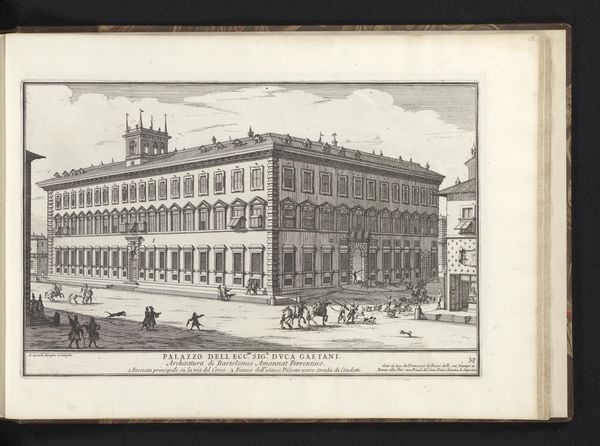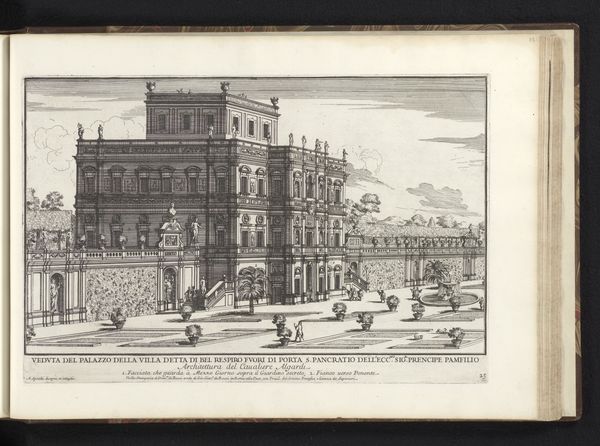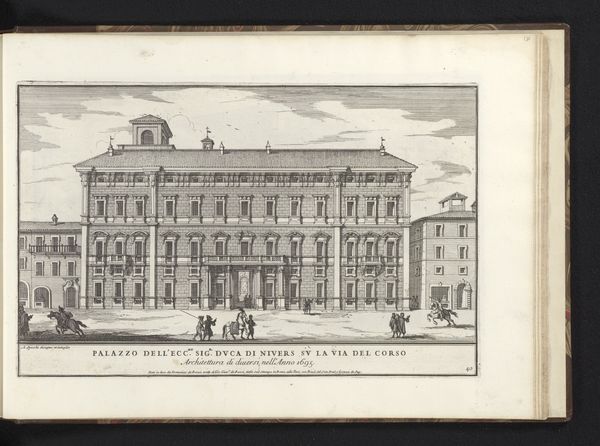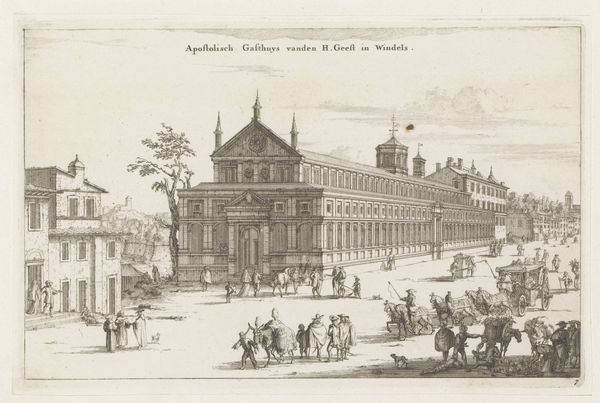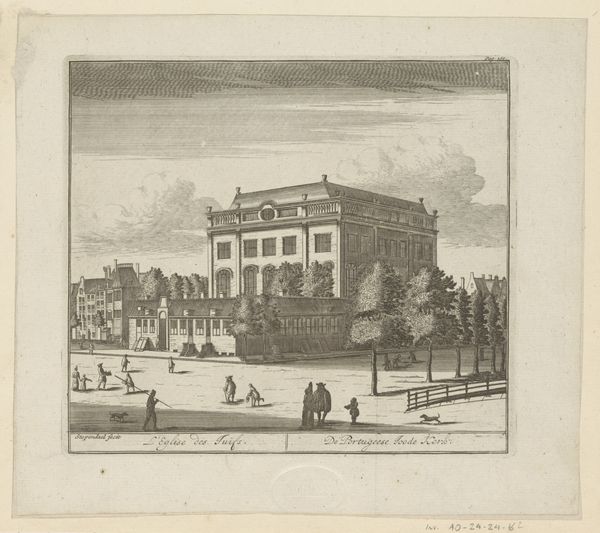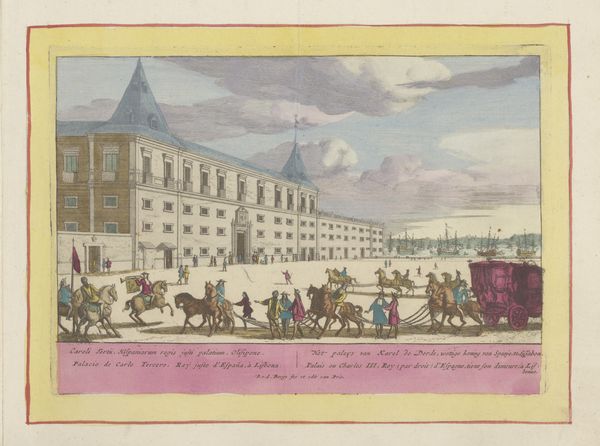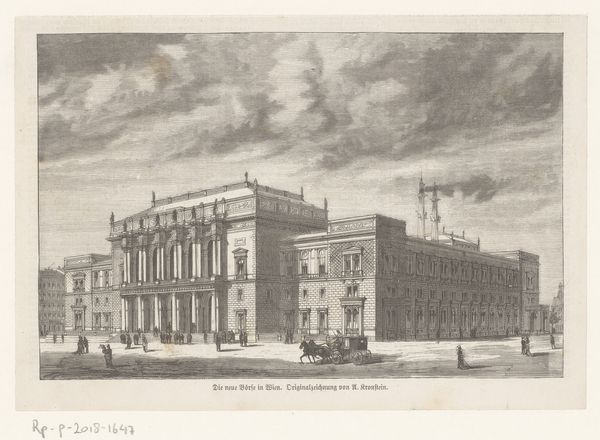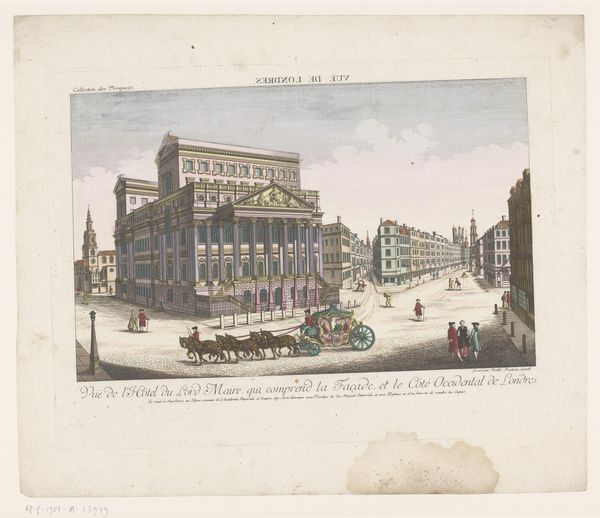
print, engraving, architecture
#
baroque
# print
#
cityscape
#
engraving
#
architecture
Dimensions: height 120 mm, width 159 mm
Copyright: Rijks Museum: Open Domain
Editor: Here we have Romeyn de Hooghe's "Gezicht op de Portugese Synagoge te Amsterdam," a cityscape created sometime between 1675 and 1725 using engraving techniques. The scene feels rather bustling and public; what do you see in this piece beyond just a rendering of a building? Curator: Well, first, let's consider the historical context. This print depicts the Portuguese Synagogue in Amsterdam during a time of relative religious tolerance. How does the prominent placement of the Synagogue, and the activity surrounding it, speak to Amsterdam’s identity as a haven for Sephardic Jews fleeing persecution? Consider the power dynamics at play. Editor: I see it's a bustling scene with people from different social strata occupying the same public space. The presence of a horse-drawn carriage implies wealth. Does this print tell us anything about the social stratification within the Jewish community itself? Curator: Precisely. The print subtly acknowledges internal diversity, inviting reflection on whether tolerance truly extends across all social lines. The very act of creating and disseminating this image raises questions of visibility, representation, and who has the power to define a community's image. Does this celebratory depiction accurately reflect lived experiences for all members? Editor: That’s a really important point. It highlights how even seemingly neutral depictions can participate in complex narratives of power and inclusion. Curator: Indeed. Consider too the buildings themselves - civic pride made manifest through architecture, designed not only for ritual use but as a statement of communal identity within a broader, and potentially hostile, society. How does this image challenge or reinforce existing stereotypes, or prejudices? Editor: Thinking about it that way makes me see this image not just as a picture but as a historical document loaded with social meaning. Curator: Exactly! And with continued contemplation we unveil layers that connect this single print to complex conversations about identity, power, and representation still relevant today.
Comments
No comments
Be the first to comment and join the conversation on the ultimate creative platform.


